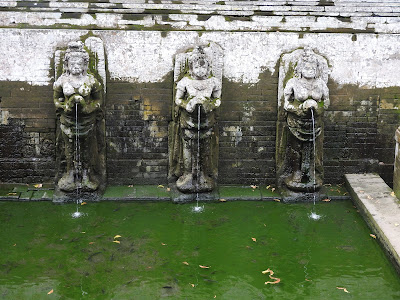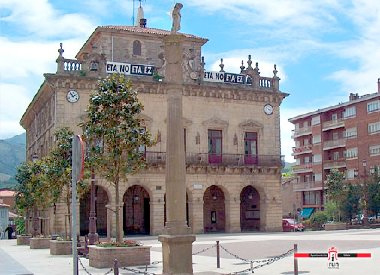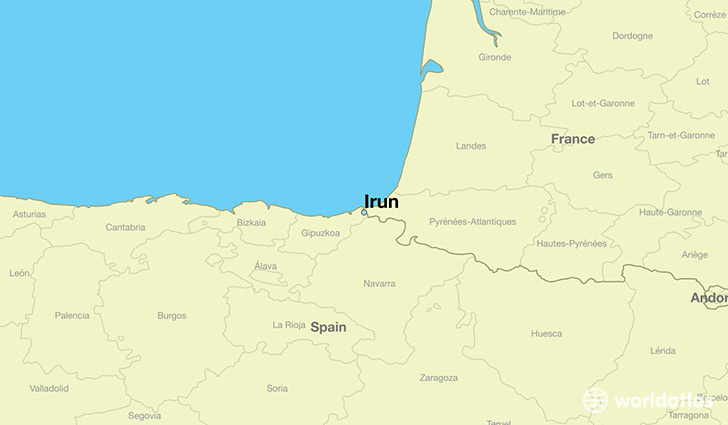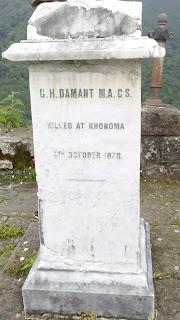.
GRANADA-----SPAIN |
| View of Granada |
“How lazily the sun goes down in Granada, it hides beneath the water, it conceals in the Alhambra.”(Ernest Hemingway.)
GRANADA ,Spain.
“The Last sigh of the Moors” by Lauryn Christopher, touched my
not-too-strong heart with an intense poignancy that made me want to visit
Granada, in the province of Andalusia. It was the last bastion of the
Moorish kings .The Moors ruled southern Spain for 700years before Boabdil, the
last king, handed over the key of Granada to King Ferdinand and Queen Isabella
thus completing the Christian” Reconquista” of the Iberian Peninsula.
It was the first time
I had heard about the magnificent Alhambra which led me to read further about
that era. “Tales of Alhambra” by Irving Washington, for instance, is a brilliant
exposition of that period. While I garnered information ,my travelling
companion ,Bee, worked on the challenging logistics of reaching distant Granada
from North-east India in the most
comfortable and affordable manner.
Many essentials have to be factorized before making a trip.
The weather for instance would determine the clothes you pack into your 24”suitcase
without it gaping at the seams when it rolls out on the arrival assembly line. Granada was a challenge. Although, sunny Spain
is warm, Granada situated at the foot of the Sierra Nevada Mountains, which are
almost always snow-clad, is cold or cool in March, necessitating a light
jacket, a cap and sturdy shoes. Good walking shoes are a must. Check the
weather chart to determine whether you need an umbrella.

 |
| pictures of Olive groves taken from the train |
How did we reach Granada?
So we set off to “discover the treasure of the Moors “and absorb
the Andalusian sunshine.
In Madrid, we boarded the Tourist compartment of the train operated
by RENFE, Spain’s largest state-owned rail network. The cap on luggage was
20kgs each, making it comfortable for all passengers. Helpful signage took us
to the right platform and the right coach.
The journey takes you through a varied landscape of altitude,
slopes and plains. At times you feel the train chugging upwards and at other
times it’s rattling down at a fairy’s speed. The autonomous province of
Andalusia, where Granada is located, is distinctive in its character and
identity, influenced historically by the Romans, Carthaginians, Byzantine, the
Christian rulers and particularly by the Moors.
The plains would be
almost stark had it not been for the beautiful olive trees covering acres and
acres of land. Memories of Van Gogh’s series of “The Olive Trees,” flashed
through my mind. Then you see the quiet mountains looming in the distance. In
fact it is the most mountainous region of Spain protecting a culture which is
unique by itself. Many features which we consider to be Spanish, for example
the Flamenco dance, are distinctively Andalusian .At times the music has a
Middle-eastern ring.
As the train rumbled into the station, the unfamiliar
engulfed us as we entered unknown land without a guide or agent depending solely
on the internet and the GPS.
 |
| Court of the Lions, Alhambra |
Where did we stay?
It took us a long time to decide where to stay. We had
initially decided on one of the hotels in the Albaycin area, being a World
Heritage site with a distinctive Moorish influence. The smell of hookah and
incense gives it an un-Spanish ambience. But after reading reviews in various
travel forums about muggings and brigands, which we later realised were absolutely
untrue, decided on a hotel with a very exhilarating name “Granada Five Senses
Rooms and Suites.”Truly our senses were pampered by the excellent staff,
cleanliness, cuisine and location on the Central Gran via Avenue.
The Albaycin area and Granada in general are not remotely
crime-infested as Bangkok, New Delhi or London. Necessary precautions should
always be taken where-ever you travel. Avoid the narrow thoroughfares
especially in the afternoon (when the whole of Spain is on “Siesta”) or after
dark. Besides, the little alleys are a
little confusing and there is every chance you may lose your way. Unlike Venice,
the signage is sparse. The roads in Albaycin are narrow ,cobbled, often crowded
with tourists: there is a gradient which sometimes makes it difficult for the
elderly or little children or even taxis to manoeuvre. So if you have a large
suitcase to haul with children in tow, take a hotel in the lower reaches. But
it is a must-see area.....a little off-beat, bohemian and unconventional
reminding us of the “hippy decade “of our youth. Cafes and restaurants are open
till late in most parts of Granada. In fact we could hear laughter and merry
chatter till 2am and this is very common in Spain. A kid being awake till late
and entering bars is not unusual.
 |
| Alleys in the Albaycin area |
What did we see?
The citadel and palace of Alhambra is the biggest attraction
in the city. Belonging to the Nashrid period, its spectacular architecture,
waterways and gardens have attracted visitors from all over the world. Book
your tickets on-line and reach early to avoid the queues. Remember daily
footfalls are limited and afternoons can get hot. Generalife is the pleasure palace and immaculate
garden where time can be well-spent.
We walked down from Alhambra to Plaza Neuva. You just need a
good pair of walking shoes to do this route. The square is of medium size. On a
sunny day the area fills with students, tourists and entertainers. There are a
number of cafes and souvenir shops, often tourist –traps, but there’s no harm
picking up one or two curios to add to your memorabilia. You may see antique
stuff like an old copper bowl which may have been common in the days of Don Quixote!!!
There are countless museums, statutes and museums to explore.
You can’t leave without visiting the Cathedral . The “hamam”is a must-see. So are the flamenco
dances at the caves in the Sacromento area. Tickets to these shows include transportation,
dinner/drinks (optional) and a tour of the neighbourhood which took us to
Mirador de San Nicolas from where we got a spectacular view of Alhambra at
night.
The Carrero del Darro is just a street along the river Darro
and it is difficult to rate a street . But having read reviews we decided to
give it “dekho”which was worth the walk. Located on the left bank of the river
,it is narrow with ancient bridges , old re-notated bath-houses at the end of
which there is a square abounding with activities.
A trek into the country-side or into the Sierra
Nevada mountains which form the distant boundary of Granada can be included if
you have time in hand |
| Flamenco dancer |
The cuisine is as varied as Spain’s provinces, each region
having its own cuisine. “Paella” the national dish, actually belongs to the
area of Valencia. Granada oranges and
other citrus fruits are aplenty. Gazpacho (a soup) La Tortilla de Sacromento
(stuffed omelette), Chicharron (pork dish), Pionomo (sweet pastry similar to Swiss Roll) and
a variety of tapas featuring olives, ham, and cheese satiated our hunger. Mention
must be made of “El Olivio” restaurant, 30 minutes from downtown where for
39dollars + you get a treat of a set menu of 7 courses. The chef takes time off
to explain each dish and guides you through different wines and olive oils. The
place is of a different calibre and unique in style and decor.
| Paella |
Granada is a fusion of the east and the west. The place
exudes a kind of romance and encourages one to mingle with one and all.
Let me narrate an
incident to illustrate the friendly and
helpful character of its citizens. It so
happened that I banged my head against a lamp in the hotel which left a painful
lump. Next day I went to the nearest Pharmacy looking for an ointment armed
with the Google translator not having faith in my scanty, accented Spanish. I realised that the person behind the counter ,with a brimming smile, understood me all right, but could not communicate what he wanted to say since
he did not know how to use the translator. At that moment a young gentleman who turned out to be a journalist visiting his
parents in Granada but based in Hongkong, entered into the scene. He spoke fluent Spanish,
English and French and had visited Mumbai and ( Oh my God!!) even knew where my
home-town was, (Golaghat) thanks to the famous Kaziranga national Park. He
acted as the mediator and got me the requisite medicines. Like a true knight of yore, he walked me down
to the hotel after exchanging e-mail adds.
To end......"Once you have traveled , the voyage never ends......."
 |
| The Alhambra from Mirador de San Nicholas |















































